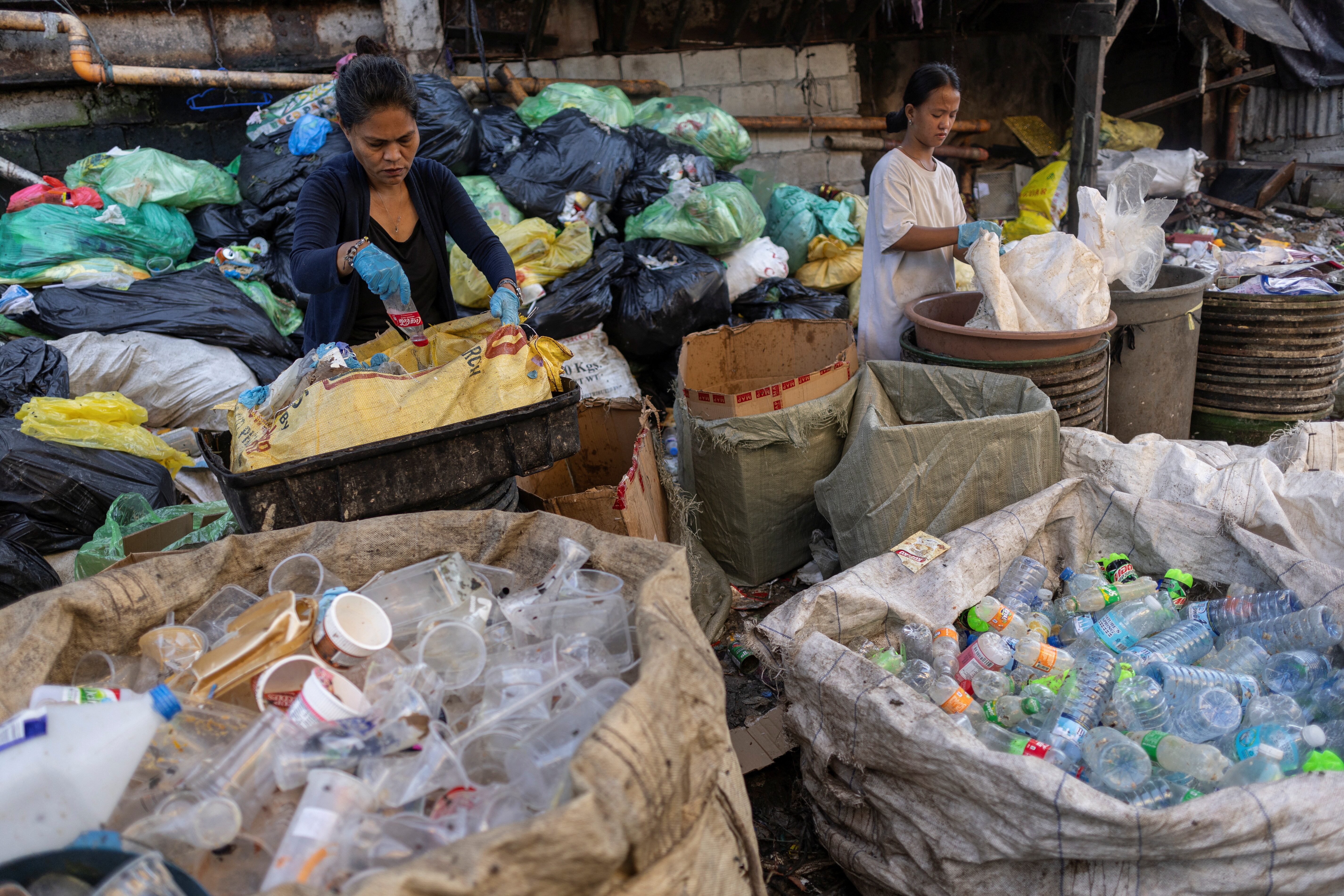The world’s e-waste is a huge problem. It’s also a golden opportunity

There is $62.5 billion-worth of value in our discarded electronic items worldwide. Image: REUTERS/Tyrone Siu
Humankind’s insatiable demand for electronic devices is creating the world’s fastest-growing waste stream. Some forms are growing exponentially. The United Nations calls it a tsunami of e-waste.
While more electronic devices are part of the problem, they also can be a big part of the solution. A more digital and connected world will help us accelerate progress towards the United Nations Sustainable Development Goals (SDGs), offering unprecedented opportunities for emerging economies.
Get it right and we will see a lot less of our precious minerals, metals and resources dumped into landfill. The benefit to industry and workers as well as the health of people and the environment could be enormous. It is crucial we swiftly employ a more circular vision in this sector.
That’s why tackling this issue head-on is now seen as a crucial task for a number of global agencies, including the International Telecommunication Union (ITU), the International Labour Organization (ILO), the United Nations Environment Programme (UNEP) and other members of the E-waste Coalition. ITU member states, for instance, recently set a target to increase the global e-waste recycling rate to 30%.
These agencies, along with the World Economic Forum and the World Business Council for Sustainable Development, have released a joint report which calls for a new circular vision for the sector. The economic arguments are strong. If we look at the material value of our spent devices, globally this amounts to $62.5 billion, three times more than the annual output of the world’s silver mines, according to data in the new Global E-Waste Report. More than 120 countries have an annual GDP lower than the value of our growing pile of global e-waste.

By harvesting this valuable resource, we will generate substantially less CO2 emissions when compared to mining the earth’s crust for fresh minerals. It makes sense too - there is 100 times more gold in a tonne of mobile phones than in a tonne of gold ore.
Extending the life of electronic products and re-using electrical components brings an even larger economic benefit, as working devices are certainly worth more than the materials they contain. A circular electronics system - one in which resources are not extracted, used and wasted, but re-used in countless ways - creates decent, sustainable jobs and retains more value in the industry.
If ocean plastic pollution was one of the major environmental challenges we finally woke up to in 2018, the ebb and flow of public opinion could and should turn to electronic waste in 2019. The numbers are astounding; 50 million tonnes of e-waste are produced each year, and left unchecked this could more than double to 120 million tonnes by 2050.
It is hard to imagine even 50 million tonnes, yet this is equivalent in weight to all the commercial aircraft we have ever built throughout history, or 4,500 Eiffel Towers, enough to cover an area the size of Manhattan - and that’s just one year’s worth of the e-waste we create.
This mushrooming stream of screens, cables, chips and motherboards is fuelled by our love of devices, many of which are connected to the internet. They now number more than humans and are projected to grow to 25-50 billion by 2020, reflecting plummeting costs and rising demand.
The situation is not helped by the fact that only 20% of global e-waste is formally recycled. The remaining 80% is often incinerated or dumped in landfill. Many thousands of tonnes also find their way around the world to be pulled apart by hand or burned by the world’s poorest workers. This crude form of urban mining has consequences for people’s wellbeing and creates untold pollution.

We already know what the solutions are; it is now a matter of implementing them effectively. Firstly, better e-waste management strategies and green standards can help address this challenge.
By all coming together on the global stage we can create a sustainable industry that generates less waste, and in which our devices are re-used as well recycled in novel ways. This also creates new forms of employment, economic activity, education and trade.
Already 67 countries have enacted legislation to deal with the e-waste they generate. Apple, Google, Samsung and many other brands have set ambitious targets for recycling and for the use of recycled and renewable materials.
It is now time we looked at dematerializing the electronics industry. The rise of device-as-a-service business models could be one avenue. This is an extension of current leasing models, in which consumers can access the latest technology without high up-front costs. With new ownership models, the manufacturer has an incentive to ensure that all resources are used optimally over a device’s lifecycle.

Changes in technology such as cloud computing and the internet of things (IoT) can help with dematerialization. Better product tracking and take-back schemes, which consumers trust, also constitute an important first step to circular global value chains.
It is about changing the direction of the prevailing linear ‘take, make and dispose’ model as a first step towards the circular economy we want to see in the future. However, this requires bold solutions, expertise, incentives and policies.
Entrepreneurs, investors, academics, business and labour leaders and lawmakers will all be needed to make the circular economy work. Innovative business and reverse supply chain models, circular designs, safety for e-waste collectors and ways of formalizing and empowering informal e-waste workers are all part of the picture. Action is needed now.
We don’t want precious minerals and metals to be the new plastic. E-waste is not pollution, nor is it waste - it’s a vital resource we are only just starting to value in full.
Don't miss any update on this topic
Create a free account and access your personalized content collection with our latest publications and analyses.
License and Republishing
World Economic Forum articles may be republished in accordance with the Creative Commons Attribution-NonCommercial-NoDerivatives 4.0 International Public License, and in accordance with our Terms of Use.
The views expressed in this article are those of the author alone and not the World Economic Forum.
Stay up to date:
Electronics
Related topics:
Forum Stories newsletter
Bringing you weekly curated insights and analysis on the global issues that matter.
More on Circular EconomySee all
Felipe Basso
November 13, 2025







